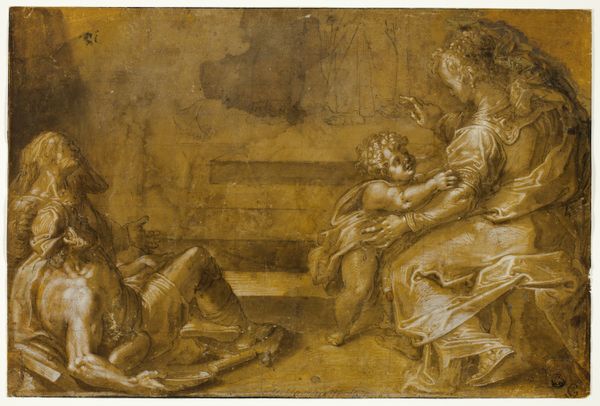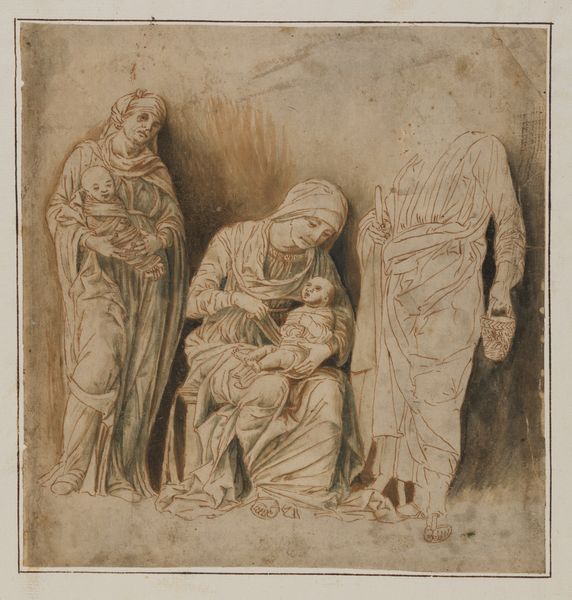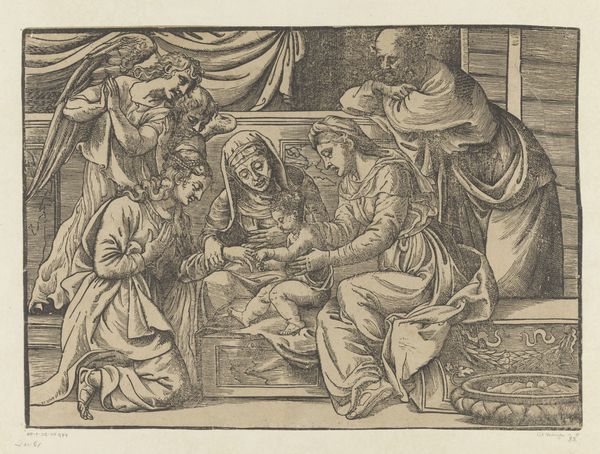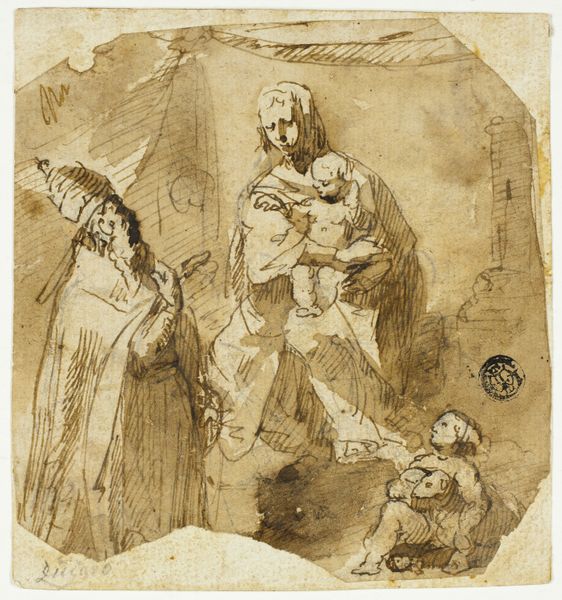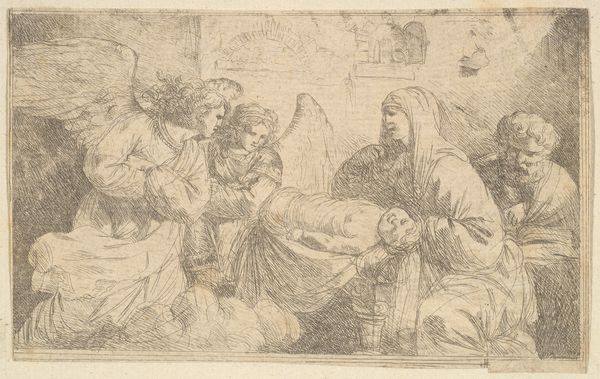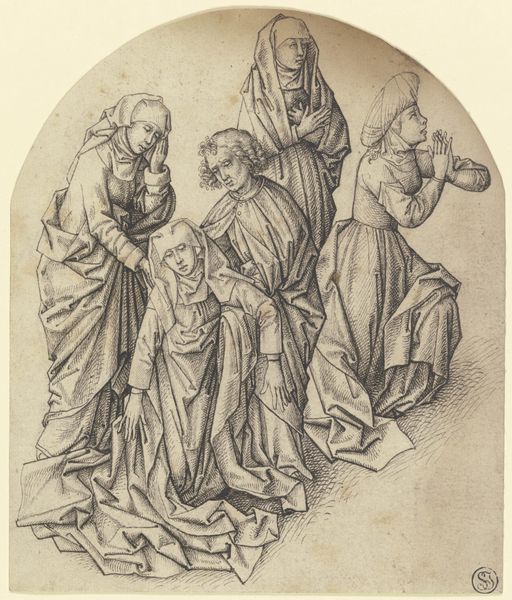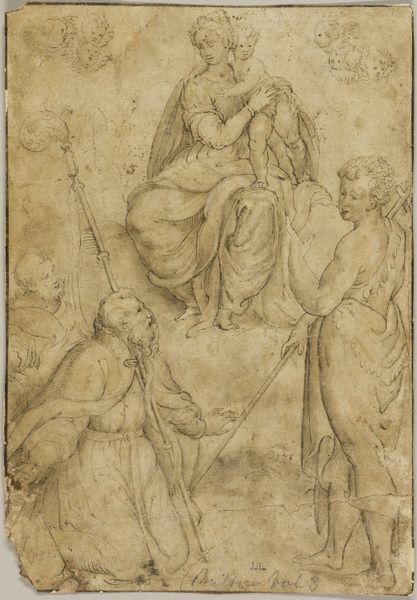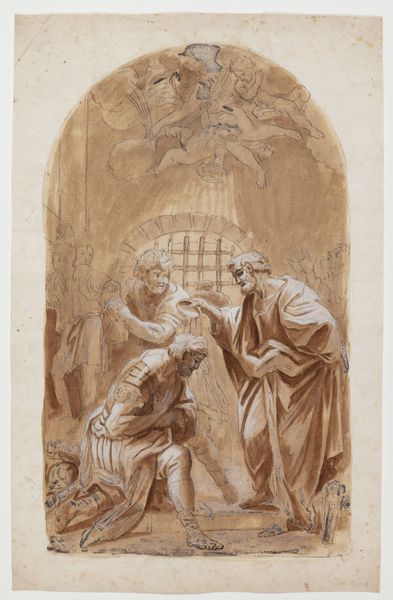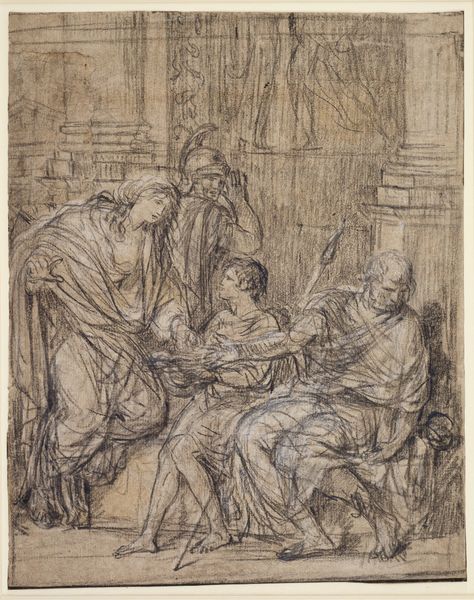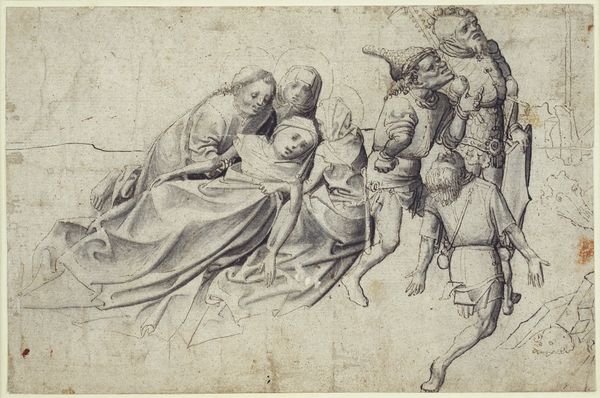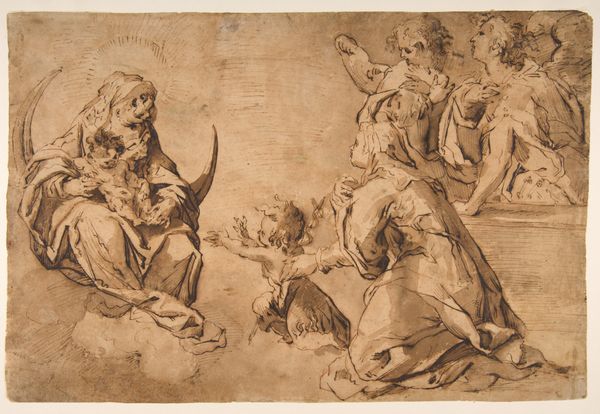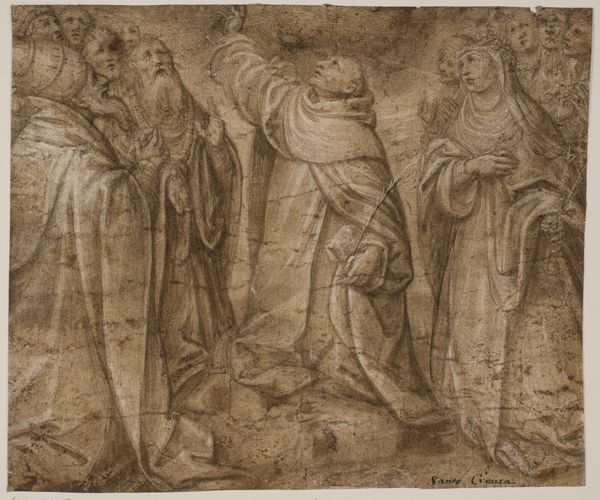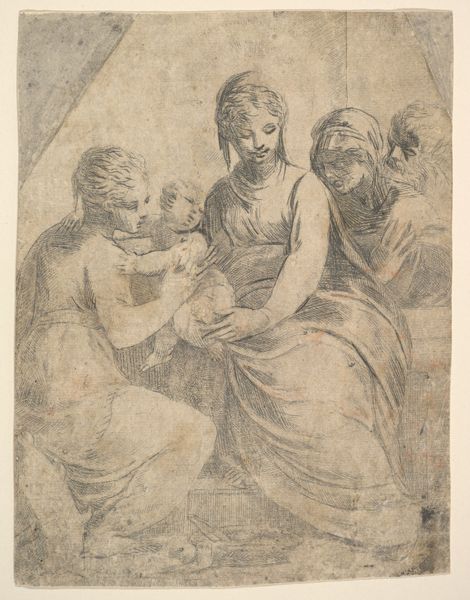
Madonna and Child with Saints Roch and Sebastian 1500 - 1535
0:00
0:00
drawing, charcoal
#
portrait
#
drawing
#
charcoal drawing
#
figuration
#
oil painting
#
charcoal
#
history-painting
#
italian-renaissance
Dimensions: 9 5/8 x 14 3/4 in. (24.5 x 37.5 cm)
Copyright: Public Domain
Curator: What strikes me immediately about this drawing is its subdued palette and almost devotional stillness. The composition, though, has an undeniable monumentality. Editor: This is "Madonna and Child with Saints Roch and Sebastian" by Michele da Verona, made sometime between 1500 and 1535. It is currently housed here at the Metropolitan Museum of Art. The work appears to be executed primarily in charcoal, giving it this wonderful depth through the gradations of light and shadow. Curator: Absolutely, the materiality speaks volumes! It looks like it could be a preparatory sketch for a larger painting. Note the layering of the charcoal. What type of paper stock do you think he chose and how would that have helped to communicate this piety that you noted earlier? Editor: Good point about preparatory drawings of this period. These "cartoons," as they were often called, would become politically charged when, for instance, deployed as propaganda tools during periods of reformation. One could imagine the drawing here easily being transferred as a much larger mural and taking on a civic role, especially depicting saints known for combating plague. Curator: Right, there is so much weight and seriousness to how these figures are handled that speaks to that transfer of power and potential consumption. The robes of the Madonna especially call my eye as something crafted, both visually by Michele and through its implied cost. That type of material object carries enormous meaning, not only through the subject, but through the consumption of labor required to fashion it. Editor: Indeed. The way this imagery gets deployed socially, it's difficult to ignore. The figures of Roch and Sebastian are not just holy figures; they are symbols employed during periods of crisis, particularly plagues. Their inclusion speaks to the societal anxieties and desires for divine intervention during uncertain times. Curator: Analyzing how materials shape meaning is really helpful in unpacking this further for our audience. The texture created using charcoal has to do a lot with how successful the social transfer you noted would happen. Editor: Yes, by really engaging in those elements of production and dissemination, the piece invites an active look from viewers, centuries apart from the context in which it was created!
Comments
No comments
Be the first to comment and join the conversation on the ultimate creative platform.
